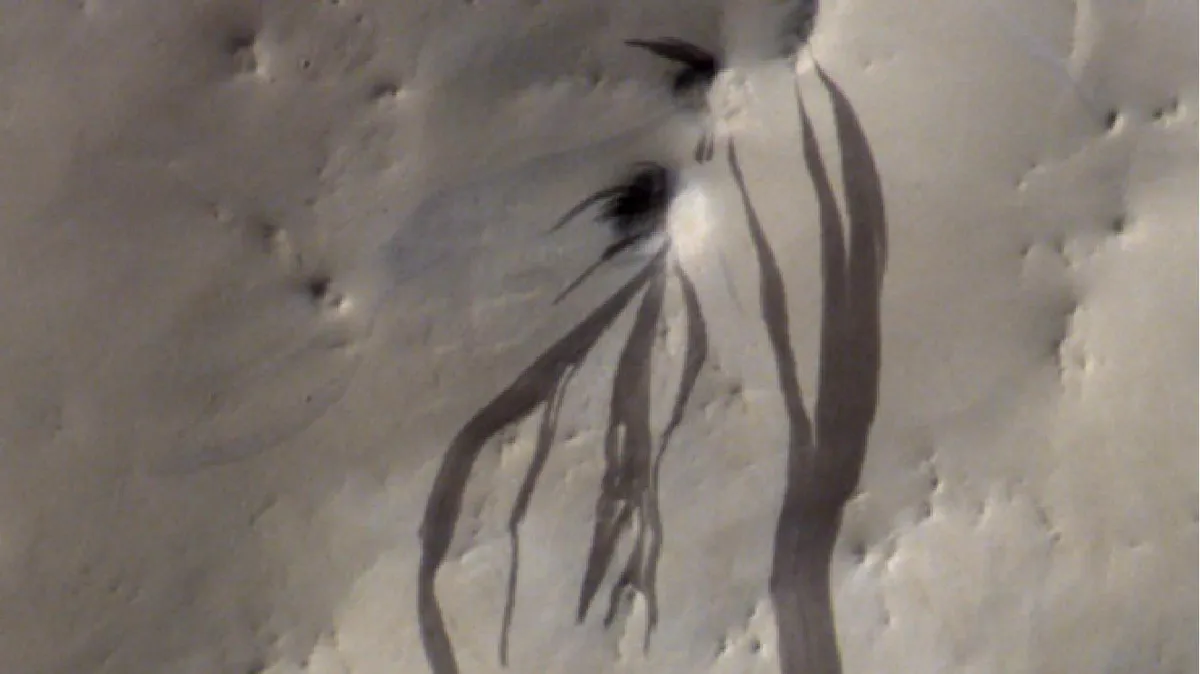
First identified during NASA's Viking mission in the 1970s, long, dark markings known as slope streaks traverse the Martian landscape, often stretching across the surface for hundreds of feet. While some of these striking features have remained consistent for decades, others, categorized as recurring slope lineae, can fade within a single season. These markings sharply contrast with Mars' dusty red surface, prompting scientists to investigate their origins.
Given the current state of Mars, characterized by its dry and arid environment, where temperatures rarely exceed the freezing point of water, the source of these streaks has been a topic of intense research and debate. For many years, these features were considered one of the most compelling indicators of existing liquid water on Mars, hinting at isolated regions that could potentially support life. The prevailing theory suggested that salty water seeping from underground reservoirs—such as buried ice or subsurface aquifers—was responsible for the temporary flow across the frigid Martian surface.
However, recent research led by Adomas Valantinas, a postdoctoral researcher at Brown University, indicates that alternative factors may be at play. "A big focus of Mars research is understanding modern-day processes on Mars— including the possibility of liquid water on the surface," Valantinas stated. Their study, which meticulously reviewed these features, found no conclusive evidence of water. Instead, the team's model leaned towards dry formation processes.
Employing advanced machine learning techniques, Valantinas and his colleagues analyzed a substantial dataset comprising over 86,000 high-resolution satellite images of these streaks. This effort culminated in the creation of the first global map of Martian slope streaks, cataloging more than 500,000 individual features across the planet's surface.
Once the global map was established, the researchers compared it against various databases, including temperature, wind speed, and dust activity. Researcher Valentin Bickel from the University of Bern elaborated, "Then we could look for correlations over hundreds of thousands of cases to better understand the conditions under which these features form."
The geostatistical analysis conducted by the team revealed that slope streaks and recurring slope lineae do not appear where one would typically expect to find signs of liquid water or frost. For instance, areas with the potential for water would likely face specific directional exposure, experience significant temperature fluctuations, or exist in high humidity conditions. Contrary to these expectations, the study showed that these features are more prevalent in regions with stronger winds and increased dust activity.
The researchers concluded that slope streaks likely form when thin layers of fine dust cascade down steep inclines. While the initiation of these slides can vary, these streaks are often observed near fresh impact craters, where the shock from an impact can dislodge dust. Additionally, recurring slope lineae are frequently associated with environments prone to dust devils or rockfalls.
Understanding the formation of features such as slope streaks and recurring slope lineae is essential for unlocking the secrets of Mars and guiding future exploration endeavors. By employing a big data approach to study these patterns from orbit, scientists can rule out certain hypotheses without the need for expensive surface missions. This strategic focus enables exploration teams to concentrate on the most promising locations, bringing us closer to determining whether Mars could have supported life and ensuring the protection of the planet's delicate environments as we venture deeper into space.
The findings of this pivotal study were published on May 19 in the journal Nature Communications, contributing significantly to our understanding of Martian geology and hydrology.